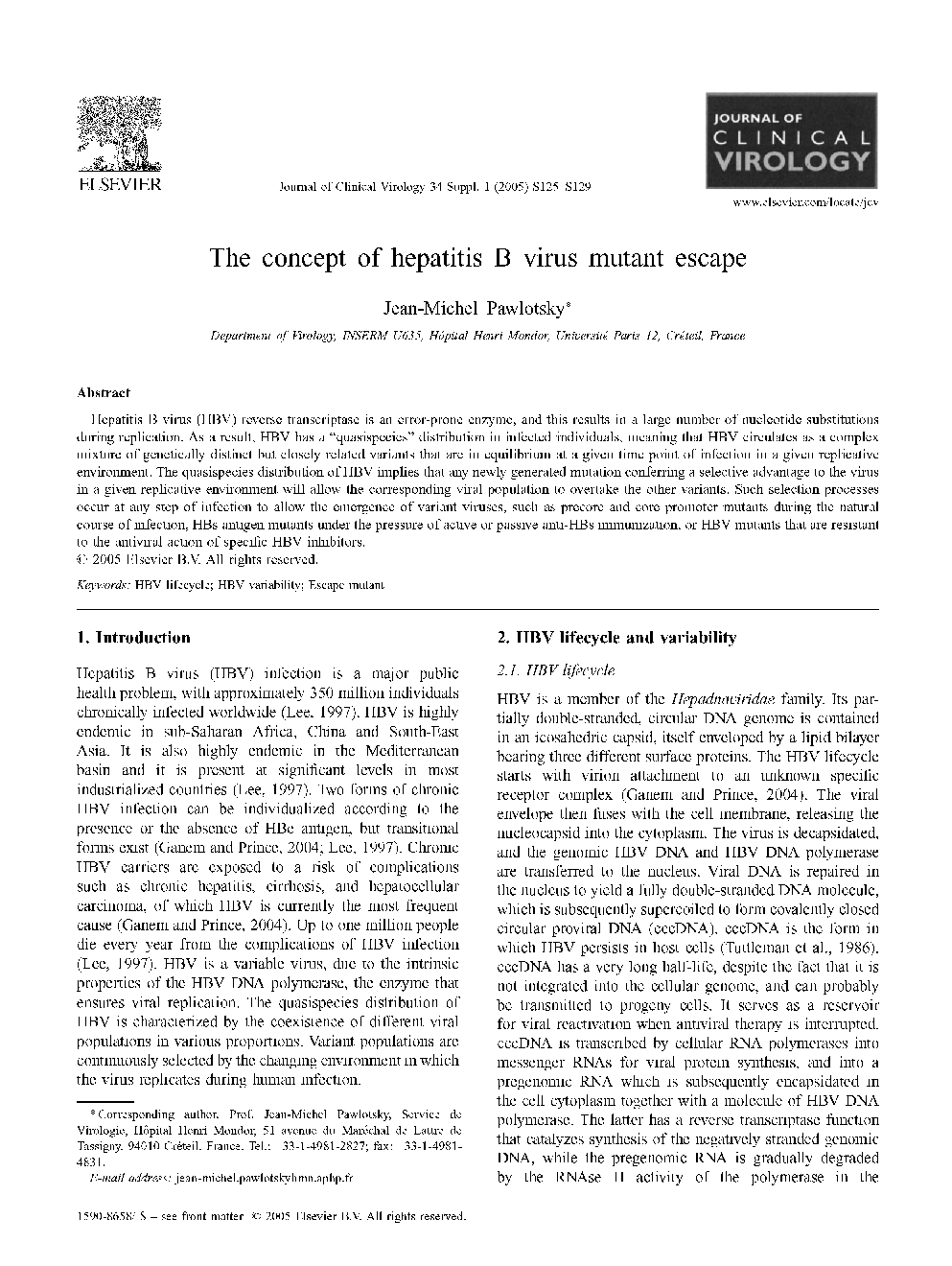| Article ID | Journal | Published Year | Pages | File Type |
|---|---|---|---|---|
| 9268335 | Journal of Clinical Virology | 2005 | 5 Pages |
Abstract
Hepatitis B virus (HBV) reverse transcriptase is an error-prone enzyme, and this results in a large number of nucleotide substitutions during replication. As a result, HBV has a “quasispecies” distribution in infected individuals, meaning that HBV circulates as a complex mixture of genetically distinct but closely related variants that are in equilibrium at a given time point of infection in a given replicative environment. The quasispecies distribution of HBV implies that any newly generated mutation conferring a selective advantage to the virus in a given replicative environment will allow the corresponding viral population to overtake the other variants. Such selection processes occur at any step of infection to allow the emergence of variant viruses, such as precore and core promoter mutants during the natural course of infection, HBs antigen mutants under the pressure of active or passive anti-HBs immunization, or HBV mutants that are resistant to the antiviral action of specific HBV inhibitors.
Keywords
Related Topics
Life Sciences
Immunology and Microbiology
Applied Microbiology and Biotechnology
Authors
Jean-Michel Pawlotsky,
